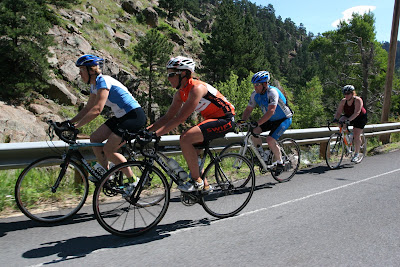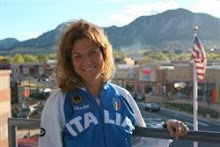To Train Right you have to train Metabolic Zones
I performed lactate threshold testing today to a fitness club in town and watching the pattern of most of the tests, I realized how it's easy to train several days per week, hitting several times high heart rate, burning hundres calories and still not having a strong aerobic system.
First of all:
what's Lactate Threshold:
Physiological definition: The exercise intensity where the rate of lactate production is greater than the rate of lactate clearance. More simply: it's the level of exercise intensity where our body starts
accumulating lactic acid, which means that our body starts using more the anaerobic metabolism to produce energy over the aerobic system.
The
key for performance is to have the threshold occuring at higher level of intensity, to go faster for longer time before fatiguing. It's for this reason that LT is one of the most important predictors for performance.
Common pattern I oberserved: subjects where reaching lactate threshold for pretty low exercise intensity and, moreover, they were not able to sustain intensity staying seated on the bike. However, they were telling me that, during thier spinning classes, many times they were hitting high intensity... but... for a "burst", then they were recovering.
The key to be able to sustain high intensity is to have a
strong aerobic system which is able to clear lactate at the same rate it's get produced. In order to build a strong aerobic system, people need to train in the aerobic metabolic zones and stress that metabolic system, until physiological adaptation occurs. To be understood I
am talking about those long 15-30 min. interval at 75-80% of your threshold. Read 75-80% of your threshold
NOT 50-60% They key is to train at this same aerobic intensity (you know which the intensity is for you after you get tested and your training zones gets assesed), for long intervals of tiime, until you are able to ride 1 hour at that intensity.
Then or, even simultaneously, but
in separate sessions, you need to stress your anaerobic system, training your anaerobic metabolism to develop "tolerance" to the accumulated lactic acid. In order to do this you perform short burst of high intensity intervals followed by recovery time.
What I am trying to say that training 30 sec all-out followed by 2 min in aerobic zones and then 10 sec all-out does not work.......I am sorry for the long paragraph but this is the
TAKE HOME MESSAGE:When you train, you train METABOLIC SYSTEMS, in order to do this Train 1 Metabolic zone a time , the specific zone that targets the correspondent metabolic system....
and please, do not forget to ride long time in that
sustainable heart rate or power..... whatever that number is, but if you do so, then that number can get bigger and bigger,
Talk to you soon -
Luisa http://www.davanticycling.com/luisa@davanticycling.com




































